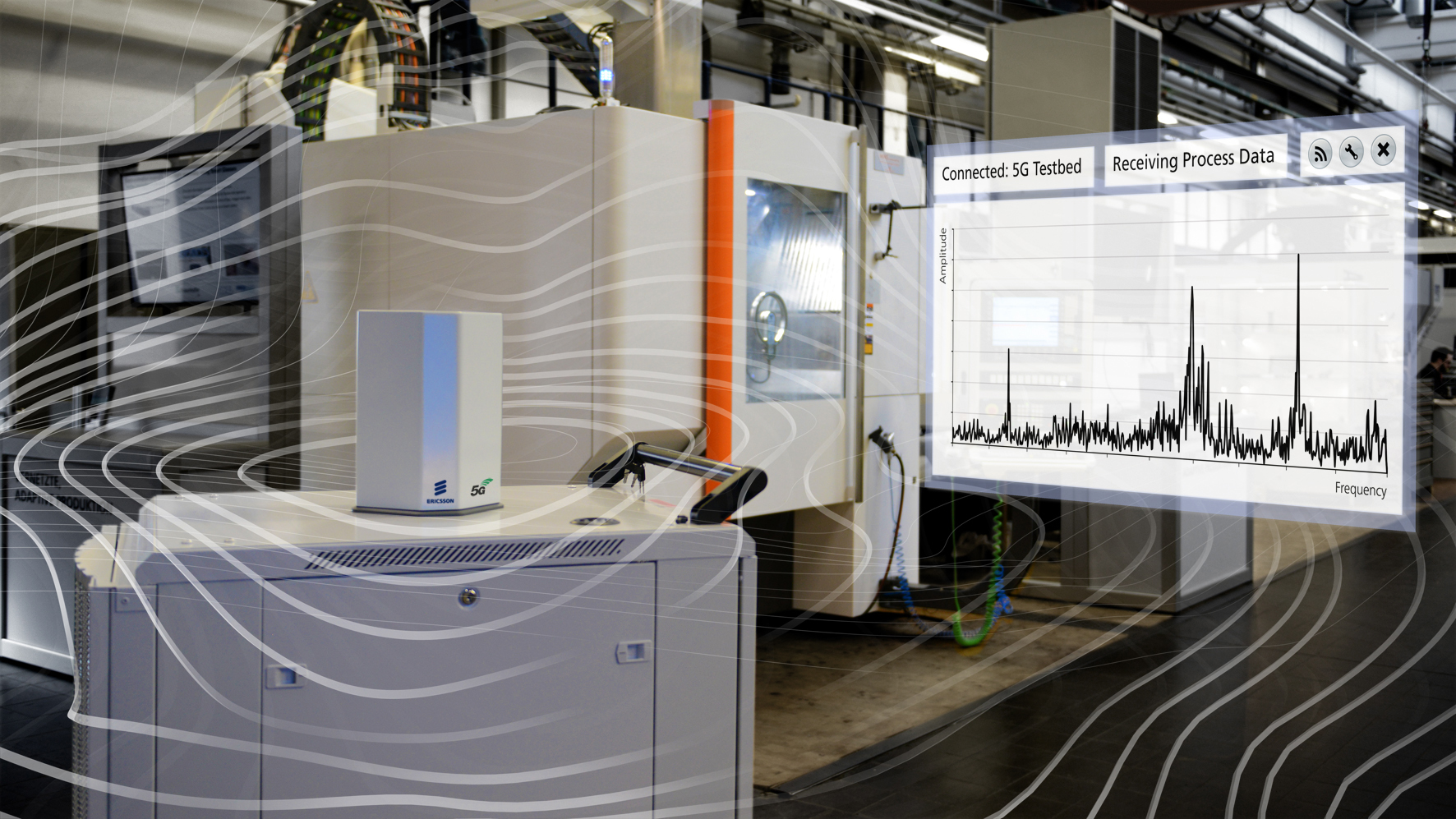Transmitting measuring data wireless in real time
Sensors continuously record measurements in plant and machinery to check that everything is running according to plan and to enable any errors in the industrial production environment to be recognized at an early stage. However, as a rule, evaluation of the data is decentralized and takes place after a time lag. In contrast to this, the 5G wireless standard permits direct, wireless measurement in real time. Fraunhofer in Aachen has teamed up with Ericsson to offer a unique test environment for 5G applications in industry. The partners will be using the example of aero-engine component manufacture to demonstrate live, for the first time, the opportunities provided by the technology at the Hanover Fair from 23– 27 April 2018 (Hall 17, Booth C24).

The production of aero engines is a complex and expensive business. The whole manufacturing chain of a compressor component known as Blisk (blade-integrated disk) can cost up to 200,000 EURO. The highest levels of safety and quality standards must be observed and computer-controlled machine tools have to be programmed to ensure that the components are produced exactly as stipulated in the design plans. Sensors mounted on plant and machinery monitor the production process continuously. ”Yet there is always a certain element of residual risk because the quality analysis is dencentralized with a considerable time lag. The natural frequencies of the thin-walled blades present a particular problem in production as any uncontrolled vibration has adverse effects on the quality, which have to be corrected via time-consuming manual operations following the production,” declared Dr. Sascha Gierlings, Head of Prototype Manufacturing at the Fraunhofer-Institute for Production Technology IPT in Aachen.
Unique test environment in Aachen
A combination of the latest sensor technology and rapid data transfer rates like those provided by the future mobile communication standard 5G seems to be a promising solution to this problem. In the specific case of blisk production, the Fraunhofer IPT has attached a specially-developed sensor directly to the component. This transfers the vibration spectra of the blisk via 5G with sub millisecond latency to software which recognizes immediately whether the vibrations exceed the permitted maximum or have reached critical frequencies and adapts the production process accordingly without delay. An additional advantage: The rapid data transfer allows a digital twin, the virtual reflection of a component to be generated. This twin helps to answer important questions relating to the production process at the computer, before the process begins.
The live transfer of component data was developed by the Research Institute in Aachen in collaboration with Ericsson, the Swedish technology provider in the High Performance Center Networked, Adaptive Production. The partners will be unveiling their solution to the public for the first time in a live demo at the Hanover Fair at the end of April: The researchers from the Fraunhofer Institute will transfer in real time the vibration spectrum of a milled blisk via 5G technology directly from the sensor to a display unit. ”We hope that our appearance at the fair will encourage all interested companies to visit us in Aachen so that they can profit from the unique test environment we have here for 5G applications in industry,” adds Niels König, Manager of the Production Metrology Department and Coordinator of 5G activities at the Fraunhofer IPT, addressing potential clients directly. ”Blisk production is only one of many conceivable fields of application. Its complexity, however, makes it particularly suitable for use as a demonstrator.”
”Examples of applications such as Blisk production highlight the fact that there is no way round 5G for those striving to future-proof their production,” explains Stefan Koetz, CEO of Ericsson GmbH. ”Of course, when you are creating solutions to connectivity as part of Industrie 4.0 it is essential to work side-by-side with a solid partner with a track record of integrity as well as with unsurpassed standards in quality and reliability. Our mission statement in a nutshell.”
5G from 2020
Plans are already well under way to introduce 5G as the new mobile communication standard by 2020. In addition to low latency times, it promises high data transfer rates of up to 10,000 megabits per second and allows for numerous devices to be operated simultaneously in closely linked small radio cells. For the first time ever, 5G technology thereby accommodates the use of wireless sensor connections for real time data analyses and adaptive control of production processes with short reaction times. ”The greatest challenge facing mobile communications providers from now until 2020 will be to continue to reduce the size of transmission units. From laptop to smartphone or chip size, if possible. Our mission is to develop the measuring and control technology required,” is how König sums up the next steps in the development process.
High Performance Center Networked, Adaptive Production
The focus of the High Performance Center Networked, Adaptive Production is on developing, systematically, introducing and using modern digitalization technologies for sustainable, industrial production systems and value chains as part of the Industrie 4.0 initiative. The blisk scenario is one of six pilot applications.